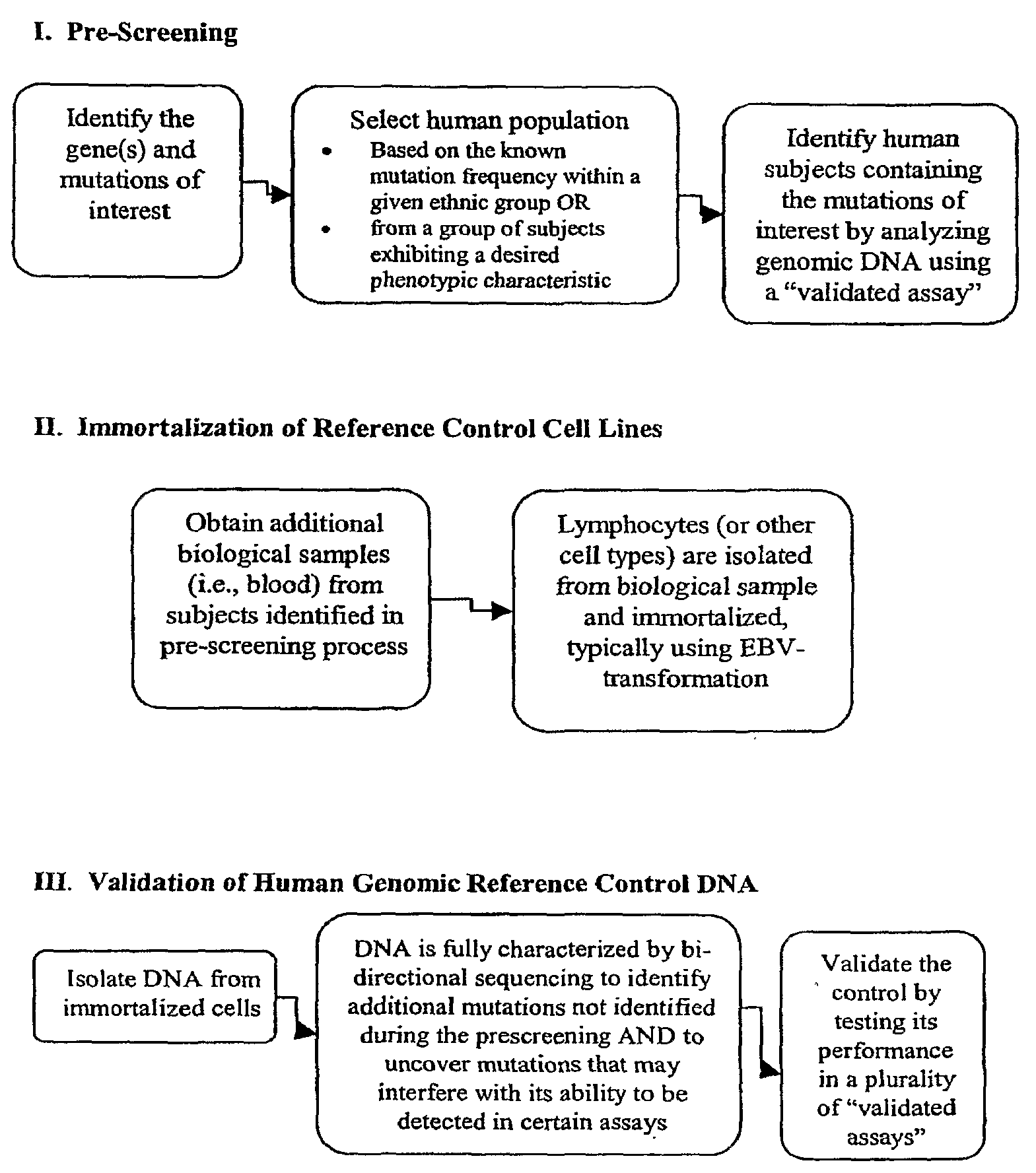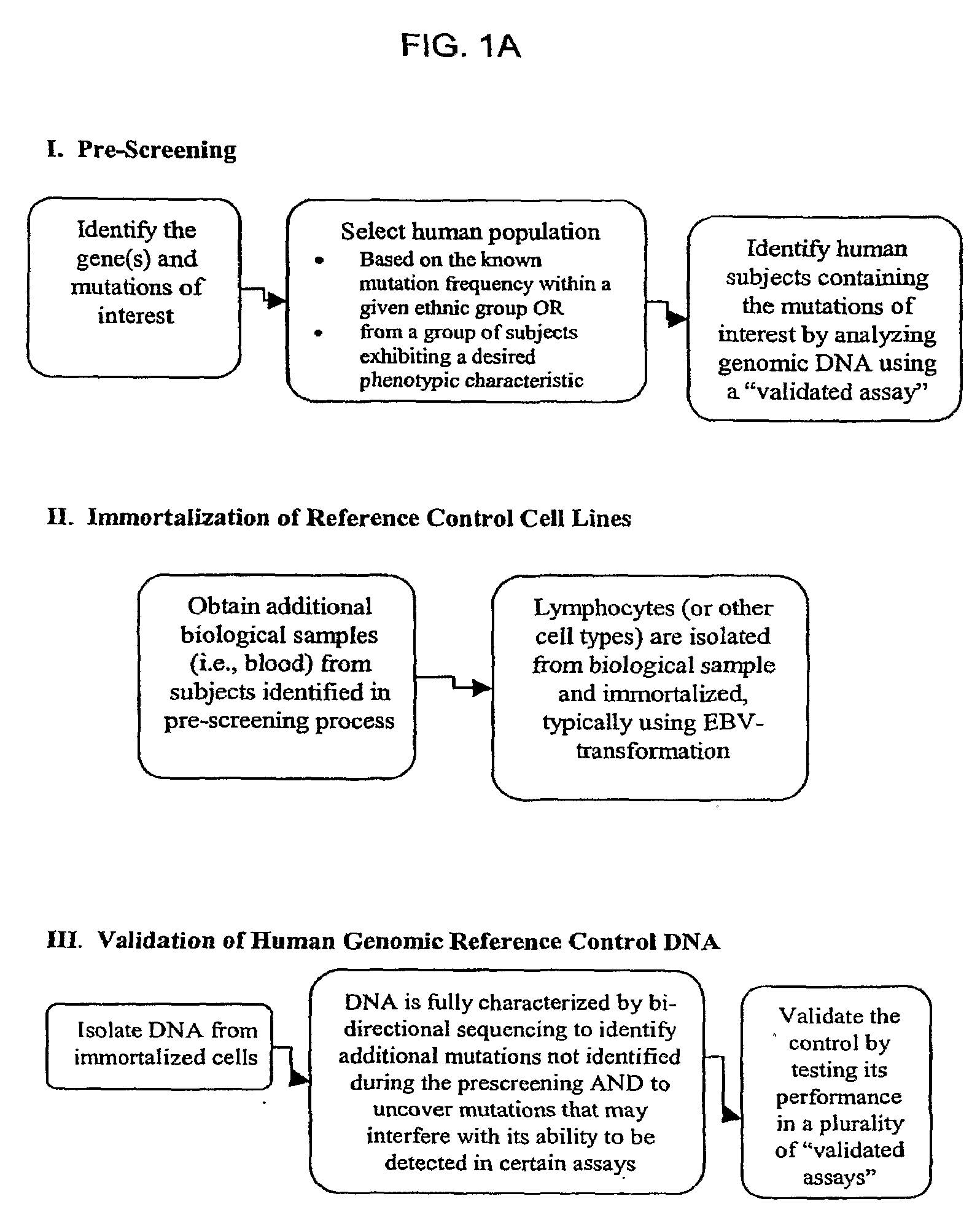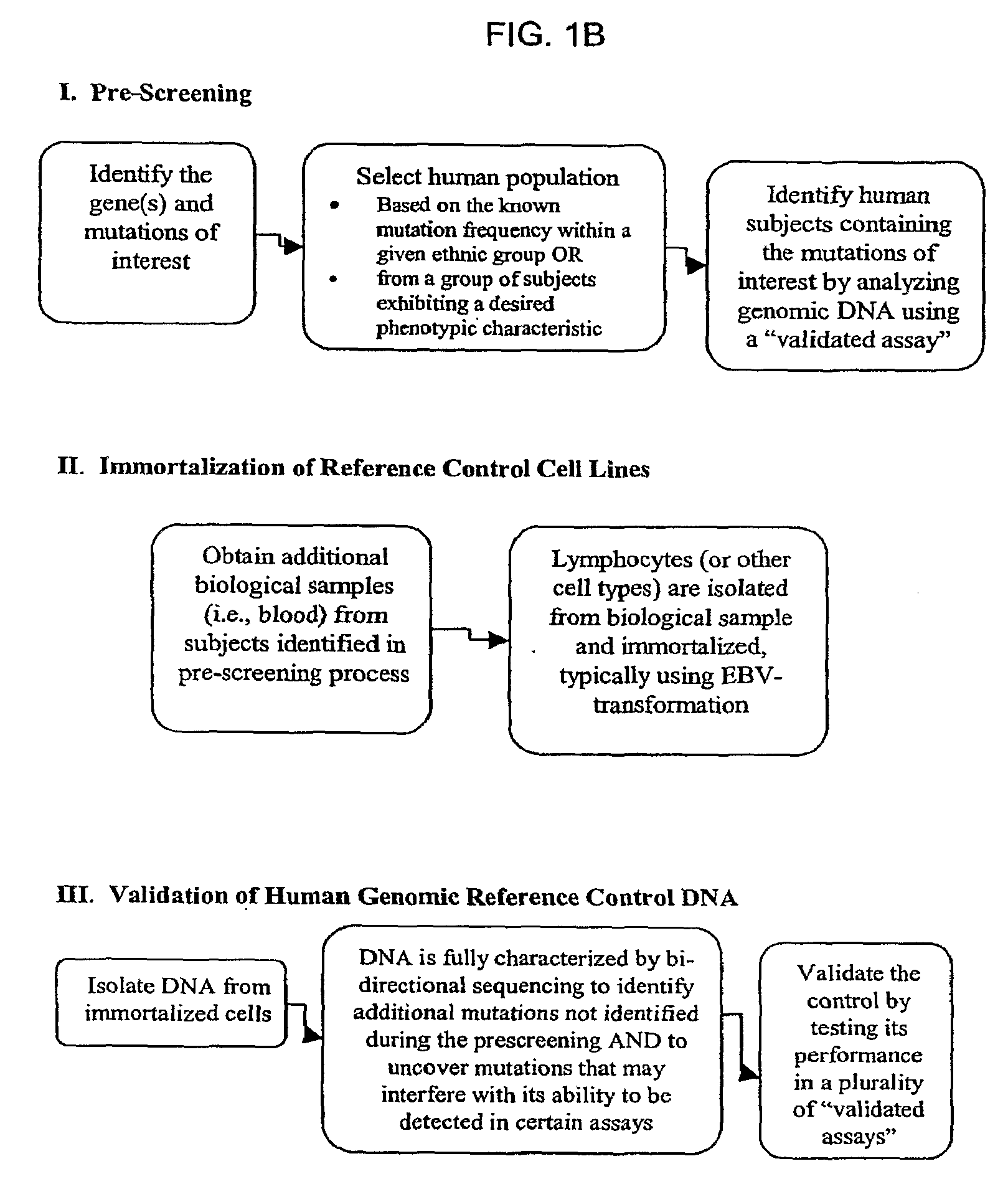Method for Generating Reference Controls for Pharmacogenomic Testing
a reference control and pharmacogenomic technology, applied in the field of pharmacogenomics, can solve the problems of inability to determine which subject dnas are most appropriate for use as controls, inability to obtain reference controls, so as to avoid adverse drug reactions or ineffective therapies
- Summary
- Abstract
- Description
- Claims
- Application Information
AI Technical Summary
Benefits of technology
Problems solved by technology
Method used
Image
Examples
example 1
Reference Control Cell Lines
[0174]Using the methods described herein, cell lines were generated with alleles for specific mutations in CYP450, namely, CYP2D6, CYP2C9 and CYP2C19, in addition to UGT1A1 and VKORC1. Cell lines containing mutations within CYP2A6, CYP3A4, CYP3A5, DPD, NAT2, and MDR1 are being developed. For each gene, there are numerous alleles, and Table 1, below, shows the cell lines that have been prepared using the methods described herein.
[0175]The cell lines were prepared as follows. Blood was drawn from properly consented subjects. Per the informed consent, all subjects were willing to be contacted in the future in order to provide additional blood samples. The DNA from these blood samples was extracted and purified, and each one was tested for the appropriate mutations (polymorphisms), in this case, mutations in the CYP450, VKORC1, and UGT1A1 genes. Interesting subjects were identified, and called back for additional blood samples. The lymphocytes were isolated a...
example 2
Genomic DNA Containing a Mutation of Interest and a Mutation Preventing Binding to a Desired Primer
[0178]A series of screens were conducted to find samples that include a mutation of interest, such as a mutation in CYP450; but the primer of interest was unable to detect the presence or absence of such a mutation. For example, a sample was screened for a mutation in CYP450, the *6 mutation. A proprietary assay which detects *6 showed no band for wildtype or mutant. Initially, it was believed that there was a mutation in the primer binding site that prevented the sample from being properly identified for its *6 status. A careful analysis of the sample showed that there was, indeed, a mutation in the binding site. Because of this second mutation, the sample would not function as a suitable reference control when used with that specific primer to detect the specific *6 mutation but was suitable as a reference control to detect possible mutations in the primer binding site for *6. In a s...
PUM
| Property | Measurement | Unit |
|---|---|---|
| volumes | aaaaa | aaaaa |
| size | aaaaa | aaaaa |
| frequency | aaaaa | aaaaa |
Abstract
Description
Claims
Application Information
 Login to View More
Login to View More - R&D
- Intellectual Property
- Life Sciences
- Materials
- Tech Scout
- Unparalleled Data Quality
- Higher Quality Content
- 60% Fewer Hallucinations
Browse by: Latest US Patents, China's latest patents, Technical Efficacy Thesaurus, Application Domain, Technology Topic, Popular Technical Reports.
© 2025 PatSnap. All rights reserved.Legal|Privacy policy|Modern Slavery Act Transparency Statement|Sitemap|About US| Contact US: help@patsnap.com



